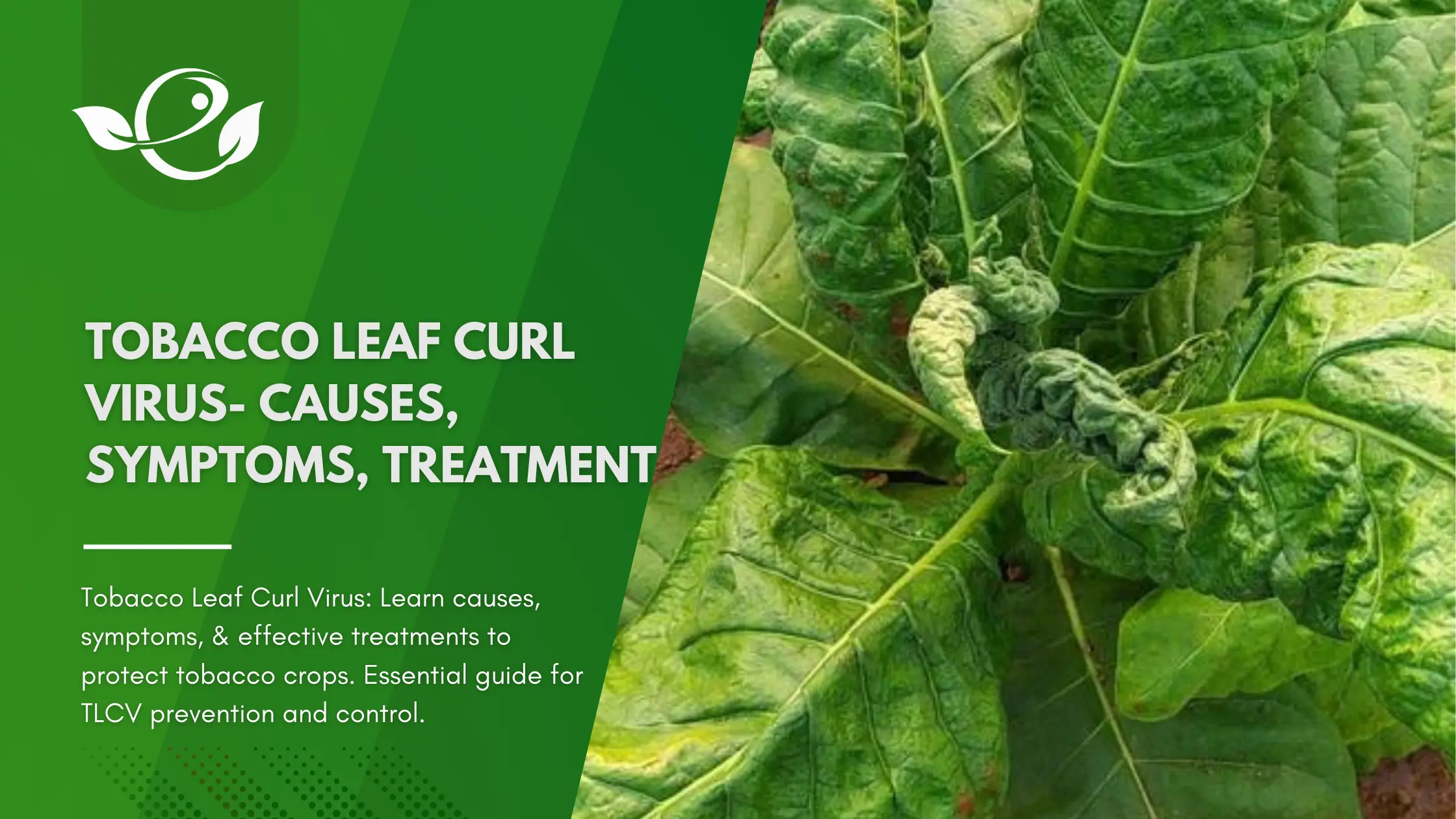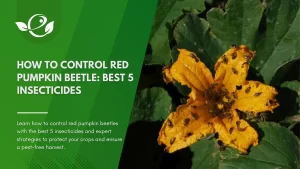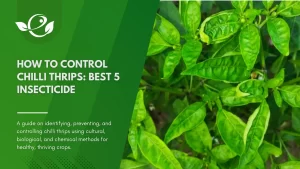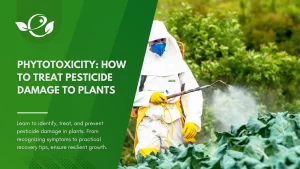Table of Contents
Tobacco Leaf Curl Virus (TLCV) is a significant threat to tobacco crops worldwide, wreaking havoc on the livelihoods of farmers and the quality of their produce. This virus, primarily transmitted by the pervasive whitefly, causes severe damage that often results in stunted growth, distorted leaves, and substantial economic losses. The impact of TLCV extends beyond just the visual symptoms on the leaves; it disrupts the entire growth cycle of the tobacco plant, affecting the overall yield and quality of the harvest.
In regions where tobacco cultivation plays a crucial role in the agricultural economy, the presence of TLCV poses a persistent challenge. The virus’s ability to spread rapidly through infected vectors and plant material underscores the need for vigilant management and control strategies. Understanding the causes, recognizing the symptoms early, and implementing effective treatment and prevention methods are essential steps to combat this virus and safeguard crops.
This comprehensive guide delves into the intricate details of the Tobacco Leaf Curl Virus—its causes, the tell-tale signs of infection, the best practices for treatment, and preventive measures that can help curb its spread. By the end of this article, you will gain an expert-level understanding of TLCV, empowering you to take decisive action against this persistent plant pathogen.
Understanding Tobacco Leaf Curl Virus
Tobacco Leaf Curl Virus (TLCV) is a member of the Geminiviridae family, specifically within the genus Begomovirus. This virus group is known for its ability to cause significant plant diseases, primarily through transmission by insect vectors, especially whiteflies (Bemisia tabaci). TLCV infects a variety of crops, but it is particularly notorious in tobacco farming, where it can cause devastating losses if not managed properly.
Transmission and Spread
The primary vector for TLCV is the whitefly, a small, sap-sucking insect that thrives in warm and humid environments. Whiteflies feed on the plant’s phloem, inadvertently transmitting the virus from infected plants to healthy ones. The virus can also spread through infected plant material, such as cuttings, making proper sanitation and handling practices critical in preventing its dissemination.
Geographic Distribution and Impact
TLCV is prevalent in regions where tobacco is extensively cultivated, including parts of Asia, Africa, and the Americas. The virus’s spread is facilitated by favourable climatic conditions for whiteflies and the movement of infected plant material. In areas heavily reliant on tobacco farming, the economic impact of TLCV can be profound, affecting not only the farmers but the broader agricultural sector.
Causes of Tobacco Leaf Curl Virus
Understanding the root causes of TLCV is the first step in managing its spread and impact. The primary cause is the infection by the virus itself, facilitated by specific environmental conditions and farming practices that contribute to the proliferation of the whitefly vector.
1. Whitefly Infestation
Whiteflies are the primary culprits in the spread of TLCV. These tiny insects feed on the sap of the tobacco plants, and during this process, they transmit the virus from infected plants to healthy ones. Whiteflies reproduce rapidly, and their population can explode under favorable conditions, such as warm temperatures and high humidity. This makes whitefly control a critical component of managing TLCV.
2. Environmental Conditions
Environmental factors play a significant role in the prevalence of TLCV. Warm, humid climates not only favor whitefly populations but also enhance the virus’s ability to infect and spread. Poor air circulation and overcrowded planting can exacerbate these conditions, creating an ideal environment for the virus to thrive.
3. Poor Field Sanitation
Inadequate field hygiene, such as leaving infected plant debris in the field, can serve as a reservoir for the virus. This debris can harbor both the virus and its vectors, increasing the likelihood of infection in subsequent crops. Proper field sanitation, including the removal and destruction of infected plants, is essential to prevent the spread of TLCV.
4. Use of Infected Plant Material
The use of infected seedlings, cuttings, or other plant materials can introduce TLCV into a previously uninfected field. It is crucial to source plant material from reputable suppliers and to inspect it thoroughly before planting. Ensuring that cuttings and seedlings are virus-free is a fundamental step in preventing the introduction of TLCV.
5. Lack of Crop Rotation
Continuous cultivation of tobacco in the same field can lead to a buildup of TLCV and its vectors. Crop rotation with non-host plants can help break the virus’s lifecycle and reduce the overall disease pressure in the field. Incorporating diverse crops into the rotation can also improve soil health and reduce pest populations.
Symptoms of Tobacco Leaf Curl Virus
Early detection of TLCV is key to managing its spread and mitigating its impact. The virus manifests in various symptoms, primarily affecting the leaves of the tobacco plant, but also influencing overall plant health and yield.
1. Early Signs of Infection
The initial symptoms of TLCV often include the curling and distortion of young leaves. These leaves may also exhibit a slight yellowing or chlorosis, particularly along the veins. As the virus progresses, the leaves become more severely distorted, with a thickened, leathery appearance.
2. Advanced Symptoms
As the infection progresses, the symptoms become more pronounced. Infected plants often exhibit stunted growth and reduced vigor, which can lead to a significant decrease in yield. The leaves may become brittle and prone to breaking, and in severe cases, the plant may fail to produce viable tobacco leaves at all. The virus’s impact on the plant’s growth and development can vary depending on the severity of the infection and environmental conditions.
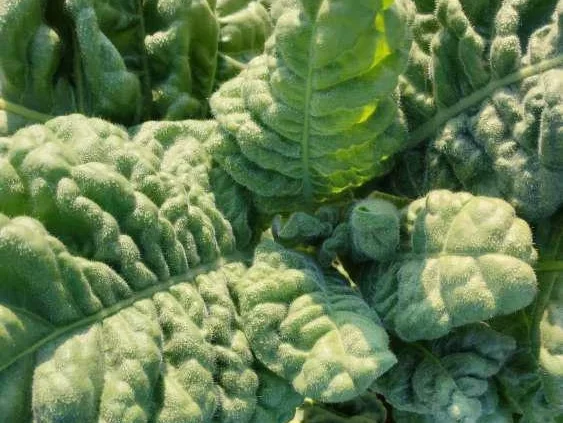
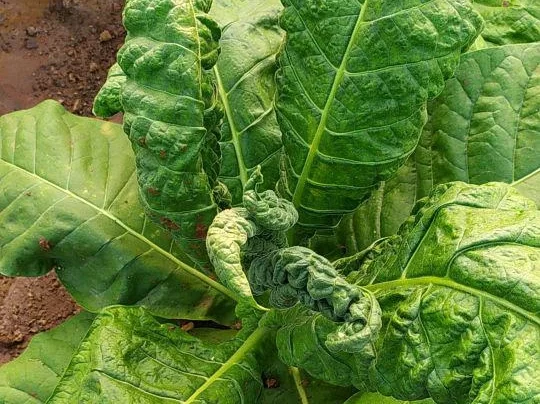

3. Visual Identification
The characteristic leaf curling and distortion are the hallmark symptoms of TLCV. However, these symptoms can sometimes be confused with other viral or physiological disorders. It is important for growers to carefully observe the plants and consider the presence of whiteflies as a key indicator of potential TLCV infection. Accurate identification of the virus is crucial for implementing the correct management strategies.
Diagnosis of Tobacco Leaf Curl Virus
Accurate diagnosis of TLCV is essential for effective management. Misdiagnosis can lead to inappropriate treatment measures, which may not only fail to control the virus but also exacerbate the problem.
1. Field Diagnosis
In the field, growers should look for the distinctive symptoms of TLCV—curled, distorted leaves with yellowing along the veins. The presence of whiteflies on the undersides of leaves is a strong indicator that the virus may be present. However, field diagnosis alone can be challenging, especially when symptoms overlap with those of other diseases.
2. Laboratory Tests
For a definitive diagnosis, laboratory tests are recommended. Enzyme-linked immunosorbent Assay (ELISA) and Polymerase Chain Reaction (PCR) are two common methods used to detect the presence of TLCV. ELISA is a cost-effective and relatively quick test that detects the virus’s proteins, while PCR provides a highly sensitive and specific diagnosis by detecting the virus’s genetic material. Laboratory confirmation ensures that the correct virus is identified, allowing for more targeted treatment and management.
Treatment and Management of Tobacco Leaf Curl Virus
Managing TLCV requires a comprehensive approach that includes cultural, chemical, and biological control methods. Integrated Pest Management (IPM) strategies are highly effective in reducing the impact of the virus and its vectors.
1. Integrated Pest Management (IPM) Strategies
IPM combines multiple control methods to manage pests and diseases in a sustainable way. For TLCV, this involves controlling whitefly populations through a combination of cultural practices, biological control agents, and, when necessary, chemical treatments.
a. Control of Whitefly Populations
Reducing whitefly populations is critical in managing TLCV. This can be achieved through:
- Biological Controls: Introducing natural predators of whiteflies, such as ladybugs, lacewings, and parasitic wasps, can help keep their populations in check.
- Cultural Controls: Implementing practices like crop rotation, intercropping with non-host plants, and using reflective mulches can deter whiteflies from infesting tobacco fields.
b. Chemical Controls
Always consider an integrated approach with preventive measures together with biological treatments, if available. Apply acephate to the soil or foliage to decrease the incidence and spread of the disease. Apply Furada [carbofuran] to kill the aleyrodid vector. When whitefly populations reach damaging levels, insecticides may be used. However, it is important to rotate insecticides with different modes of action to prevent resistance development. Insecticides should be used as a last resort and as part of an overall IPM strategy.
2. Cultural Practices
Adopting good cultural practices is crucial for managing TLCV:
- Crop Rotation: Rotating tobacco with non-host crops can reduce the buildup of whiteflies and the virus.
- Sanitation: Removing and destroying infected plants, as well as keeping the field free of plant debris, helps to reduce sources of the virus.
- Proper Spacing: Ensuring adequate spacing between plants improves air circulation, reducing the humidity that favors whitefly infestations.
3. Resistant Varieties
The use of resistant tobacco varieties, if available, can significantly reduce the impact of TLCV. Breeding programs are continuously working to develop and release varieties that can withstand the virus, providing growers with an effective tool for managing the disease.
4. Organic and Natural Control Methods
For organic growers or those looking to reduce chemical inputs, natural control methods such as neem oil, insecticidal soaps, and horticultural oils can be effective against whiteflies. These products disrupt the whiteflies’ life cycle and reduce their ability to transmit TLCV without harming beneficial insects or the environment. Control the vector population to decrease the disease incidence. Plant barrier crops, such as sunflower and castor around tobacco nurseries. Also, cover the nursery with nylon sets.
Prevention of Tobacco Leaf Curl Virus
Prevention is the most effective way to manage TLCV. By implementing preventive measures, growers can reduce the risk of infection and the subsequent impact on their crops.
1. Monitoring and Early Detection
Regular monitoring of fields for the presence of whiteflies and early symptoms of TLCV is crucial. Early detection allows for timely intervention, which can prevent the virus from spreading to healthy plants. Sticky traps, yellow cards, and regular field scouting are useful tools for monitoring whitefly populations.
2. Field Hygiene and Sanitation
Maintaining clean fields is essential for preventing the spread of TLCV. This includes removing and properly disposing of infected plants, as well as cleaning tools and equipment that may come into contact with the virus. Good field hygiene reduces the chances of the virus being carried over from one growing season to the next.
3. Protective Measures
Implementing protective measures can help shield crops from TLCV:
- Physical Barriers: Row covers can protect young plants from whiteflies, reducing the risk of early infection.
- Reflective Mulches: These mulches deter whiteflies by reflecting light, making it difficult for the insects to locate and settle on the plants.
4. Use of Certified Disease-Free Plant Material
Ensuring that all planting material is certified as disease-free is a fundamental step in preventing the introduction of TLCV into the field. Working with reputable suppliers and conducting inspections of seedlings and cuttings can help ensure that the planting material is healthy and virus-free.
Economic Impact of Tobacco Leaf Curl Virus
TLCV can have a substantial economic impact on tobacco farming. The virus not only reduces yield but also affects the quality of the tobacco leaves, leading to lower market prices and potential losses for farmers. In regions where tobacco is a major cash crop, the economic repercussions can extend beyond individual growers to the entire agricultural sector.
1. Yield and Quality Reduction
The primary impact of TLCV is on the yield and quality of tobacco leaves. Infected plants produce fewer leaves, and the leaves that are produced are often distorted, discolored, and unmarketable. This results in direct financial losses for farmers.
2. Increased Production Costs
Managing TLCV requires additional inputs, such as insecticides, biological control agents, and labor for implementing cultural practices. These increased production costs can strain farmers’ budgets, especially in small-scale operations.
3. Broader Agricultural Impact
The presence of TLCV in a region can affect the overall agricultural economy, as reduced tobacco yields can lead to lower income for farmers and reduced revenue for associated industries, such as processing and export.
Future Research and Development
Ongoing research is essential to improving the management of TLCV. Advances in plant breeding, biotechnology, and integrated pest management offer hope for more effective control methods in the future.
1. Development of Resistant Varieties
Research into breeding tobacco varieties that are resistant to TLCV is a key area of focus. By developing plants that can withstand the virus, researchers hope to provide farmers with more reliable and sustainable options for managing the disease.
2. Advances in Biological Control
Exploring new biological control methods, such as the use of beneficial fungi or bacteria that can naturally suppress whitefly populations, is another promising area of research. These natural enemies of whiteflies offer a sustainable alternative to chemical control.
3. Innovative Detection and Monitoring Technologies
New technologies, such as remote sensing and molecular diagnostics, are being developed to improve the early detection and monitoring of TLCV. These innovations can provide farmers with real-time information about virus presence, allowing for more precise and timely interventions.
Conclusion
Tobacco Leaf Curl Virus is a formidable challenge for tobacco growers, but with the right knowledge and tools, it can be managed effectively. Understanding the causes, recognizing the symptoms early, and implementing a comprehensive management strategy that includes prevention, monitoring, and treatment are critical steps in combating this virus. By staying informed and proactive, growers can protect their crops from the devastating effects of TLCV and ensure a healthy and productive harvest.
